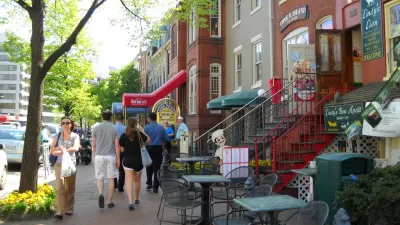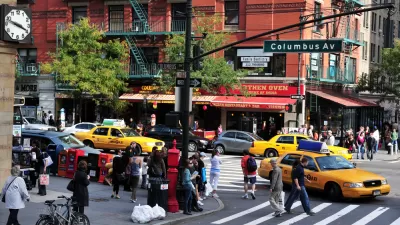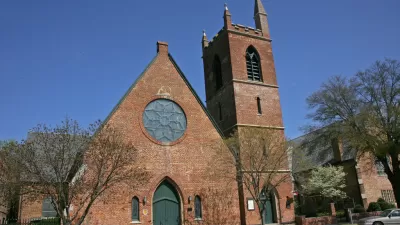New research shows areas with a heavy concentration of commercial offices experience 40 percent higher crime rates than neighborhoods that mix residential and commercial uses.

According to an article by Kaley Overstreet in Arch Daily, “mixed-use spaces do more than just create a diverse array of experiences in cities- they might also help contribute to lower crime rates.” Mixed-Use neighborhoods, writes Overstreet, “enhance social connections and promote public transportation, while also encouraging the themes of ‘live, work, and play’ in one concentrated zone.”
According to Overstreet, “In a study published under the University of Pennsylvania Law Review, data showed that it’s more likely that neighborhoods with local cafes, bars, offices, and residential areas are inherently more likely to have more ‘eyes on the street’ at more hours of the day. The collective public surveillance may deter criminals.” In the same study, “The areas where commercial offices were heavily focused experienced over 40% more crime than in other neighborhoods, especially those that included residences.”
The research concluded that it makes sense that residents may feel a greater sense of ownership for the neighborhoods where they live versus neighborhoods where they solely work, and when those two have some sort of overlap, people still feel protective of the bars, restaurants, and stores that they consider to be in their neighborhood.
Overstreet points out that “What this tells urban planners and architects is that zoning laws may be a contributing factor and an important tool for helping prevent crime in cities.”
FULL STORY: How Mixed-Use Neighborhoods Can Reduce Crime Rates

Alabama: Trump Terminates Settlements for Black Communities Harmed By Raw Sewage
Trump deemed the landmark civil rights agreement “illegal DEI and environmental justice policy.”

Planetizen Federal Action Tracker
A weekly monitor of how Trump’s orders and actions are impacting planners and planning in America.

The 120 Year Old Tiny Home Villages That Sheltered San Francisco’s Earthquake Refugees
More than a century ago, San Francisco mobilized to house thousands of residents displaced by the 1906 earthquake. Could their strategy offer a model for the present?

In Both Crashes and Crime, Public Transportation is Far Safer than Driving
Contrary to popular assumptions, public transportation has far lower crash and crime rates than automobile travel. For safer communities, improve and encourage transit travel.

Report: Zoning Reforms Should Complement Nashville’s Ambitious Transit Plan
Without reform, restrictive zoning codes will limit the impact of the city’s planned transit expansion and could exclude some of the residents who depend on transit the most.

Judge Orders Release of Frozen IRA, IIJA Funding
The decision is a victory for environmental groups who charged that freezing funds for critical infrastructure and disaster response programs caused “real and irreparable harm” to communities.
Urban Design for Planners 1: Software Tools
This six-course series explores essential urban design concepts using open source software and equips planners with the tools they need to participate fully in the urban design process.
Planning for Universal Design
Learn the tools for implementing Universal Design in planning regulations.
Clanton & Associates, Inc.
Jessamine County Fiscal Court
Institute for Housing and Urban Development Studies (IHS)
City of Grandview
Harvard GSD Executive Education
Toledo-Lucas County Plan Commissions
Salt Lake City
NYU Wagner Graduate School of Public Service




























